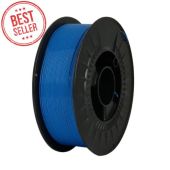What Is a Raft in 3D Printing
When you first start exploring 3D printing, you quickly realize that the quality of a finished object depends on more than just the printer and the material. The settings and techniques you choose play a big role in how successful your print will be. One of the most common support structures you will come across is the raft. Understanding what a raft is, when to use it, and what its benefits and drawbacks are will help you avoid wasted material, failed prints, and longer iteration cycles.
What a Raft Means in 3D Printing
In 3D printing, a raft is a horizontal base structure that sits underneath the printed object. It is made up of several layers of filament that are printed directly onto the build plate before the actual model begins. The model then gets printed on top of this raft, creating a separation between the object and the printer’s surface.
The idea behind a raft is simple: by laying down an extra surface, the printer ensures better adhesion for the first layer of the model. This prevents issues like warping, curling, or uneven contact with the build plate. While a raft uses additional material and time, it can make the difference between a print that succeeds and one that fails in the very first layer.
Why Use a Raft
A raft is not always necessary, but it is especially useful in specific 3D printing scenarios:
- Warping prevention: Materials such as ABS are prone to warping because of temperature changes during printing. A raft creates a stable base that minimizes this problem.
- Better first layer adhesion: If your print has a small footprint or does not stick well to the build plate, a raft provides a larger surface area for the object to cling to.
- Support for delicate parts: Some geometries or thin features benefit from starting on a raft rather than directly on the build surface.
- Surface consistency: Printers with slightly uneven build plates can achieve more reliable adhesion by using a raft as a leveling layer.
How a Raft Is Made
When you prepare a file for 3D printing, slicing software gives you the option to enable a raft. The software automatically generates the raft structure before the actual print begins.
A typical raft has three parts:
- Base layers: Thick, strong layers that attach to the build plate.
- Middle interface layers: Slightly thinner, creating a buffer between the base and the top surface.
- Separation layers: Designed to make it easier to remove the printed object from the raft once printing is done.
This structure ensures that the raft sticks firmly to the build plate, but can still be removed without damaging the model.
Pros and Cons
Pros
- Stronger adhesion for challenging prints
- Reduces warping and curling
- Creates a flat, even bottom surface
- Protects the build plate from scratches in some cases
Drawbacks
- Extra material is used, which can increase cost
- Longer printing times because the raft is printed first
- Removing the raft can leave marks on the underside of the model
The decision to use a raft depends on your material, print geometry, and desired finish. For some prints, a brim or skirt might be enough, while others require the stronger stability of a raft.
Raft vs. Brim vs. Skirt
It’s important to understand how a raft differs from other adhesion helpers commonly found in 3D printing.
- Brim: A brim is a series of extra lines printed around the base of an object. Unlike a raft, it does not go under the model but extends outward from it. Brims are often used to prevent warping while consuming less material than a raft.
- Skirt: A skirt is a simple outline printed around the model but not connected to it. Its main purpose is to prime the extruder and ensure consistent filament flow before the main print starts.
While a skirt does not aid adhesion, both brims and rafts help secure prints. A raft is usually the most robust solution when adhesion problems are severe.
When Not to Use a Raft
Although rafts are helpful, they are not always the best choice. For models where surface quality on the bottom layer is important, rafts can leave visible marks. In such cases, it may be better to use a brim or adjust build plate leveling and temperature settings.
Additionally, for small prints made with materials like PLA, rafts may be unnecessary. Since PLA usually adheres well with the right build plate preparation, printing directly on the surface can save time and material.
Best Practices for Printing with Rafts
If you decide to use a raft, a few tips will help you get the most out of it:
- Adjust raft separation distance in your slicer to make removal easier.
- Make sure the first layer of the raft is well-calibrated and adheres firmly to the plate.
- Use the right temperature settings for the chosen filament, as poor temperature control can still cause warping even with a raft.
- Experiment with raft thickness and density until you find the balance between stability and material use.
By fine-tuning these settings, you can reduce waste and achieve consistent print quality.
Conclusion
A raft in 3D printing is a support structure that ensures strong adhesion, prevents warping, and improves success rates for challenging prints. While it adds extra time and material use, it can be invaluable for materials like ABS or for models with small bases. Knowing when to use a raft and how to optimize its settings will help you avoid failed prints and achieve better results.
At 3D Trček, we provide high-quality filaments and accessories designed to support reliable 3D printing. Our wide selection helps you get the best performance out of your printer, whether you need PLA, ABS, PETG, or specialty materials.
; ?>) Shop Filaments
Shop Filaments


Please complete your information below to login.
Prijava
Create New Account